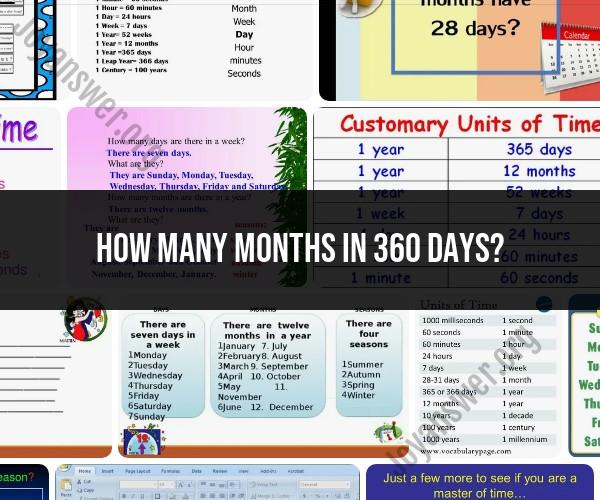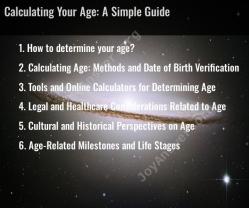How many months in 360 days?
There are different ways to divide a year into months, and the number of months in 360 days can vary depending on which calendar system you're using. Here are a few examples:
Gregorian Calendar:The Gregorian calendar, which is the most widely used calendar system today, has 12 months. In this calendar, 360 days would be equivalent to 12 months of 30 days each.
Islamic Calendar:The Islamic calendar, also known as the Hijri or Lunar calendar, has 12 months as well. However, because it is based on the lunar cycle, the length of Islamic months can vary. On average, there are 354 or 355 days in an Islamic year. So, 360 days in this calendar would be slightly more than 12 months.
Ancient Calendars:Some ancient calendars used different month lengths. For example, the ancient Egyptian calendar had 12 months of 30 days each, and they added five extra days at the end of the year for a total of 360 days.
It's important to note that the Gregorian calendar is the most widely used and accepted calendar in the world today, so when most people refer to 360 days, they are likely thinking in terms of 12 months of 30 days each as per the Gregorian calendar. Other calendars may have different month lengths and may not precisely align with 360 days.
Months in 360 Days: Calculating Time in a Non-standard Calendar
A 360-day calendar is a calendar system that has 360 days in a year. This is in contrast to the Gregorian calendar, which is the most widely used calendar system in the world, which has 365 days in a year.
There are a number of different ways to divide a 360-day year into months. One common approach is to have 12 months of 30 days each. This is the approach used by the Coptic Christian and Ethiopian calendars.
Another approach is to have 12 months of 29 days each, with an extra day added at the end of the year. This is the approach used by the Mayan calendar.
It is also possible to have 360-day calendars with months of varying lengths. For example, the ancient Egyptian calendar had 12 months of 29 or 30 days each, with an extra five days added at the end of the year.
Non-standard Calendars: Understanding Months in 360 Days
Non-standard calendars are calendar systems that differ from the Gregorian calendar in some way. This could include having a different number of days in a year, different months, or different rules for calculating leap years.
360-day calendars are one type of non-standard calendar. They are often used by cultures that have a strong connection to astronomy, as 360 is a number with great significance in astronomy.
For example, the ancient Egyptians used a 360-day calendar because they believed that the sun god Ra traveled around the earth 360 times each year. The Mayans also used a 360-day calendar, and they believed that the year was divided into two halves, each of which consisted of 180 days.
360-Day Calendar Months: Time Measurement in Historical Context
360-day calendars have been used by many different cultures throughout history. Some of the most notable examples include:
- The ancient Egyptian calendar
- The Mayan calendar
- The Coptic Christian calendar
- The Ethiopian calendar
These calendars were all developed independently of each other, but they all share the common feature of having 360 days in a year.
360-day calendars are still used today by some cultures, but they are not as common as they once were. This is due to the fact that 360-day calendars are not as accurate as the Gregorian calendar. The Gregorian calendar takes into account the fact that the Earth takes approximately 365.2425 days to orbit the sun. A 360-day calendar, on the other hand, is shorter than the actual solar year. This means that a 360-day calendar will eventually drift out of sync with the seasons.
Despite their limitations, 360-day calendars played an important role in the development of timekeeping and astronomy. They are a reminder of the ingenuity of our ancestors and their desire to understand the natural world around them.




